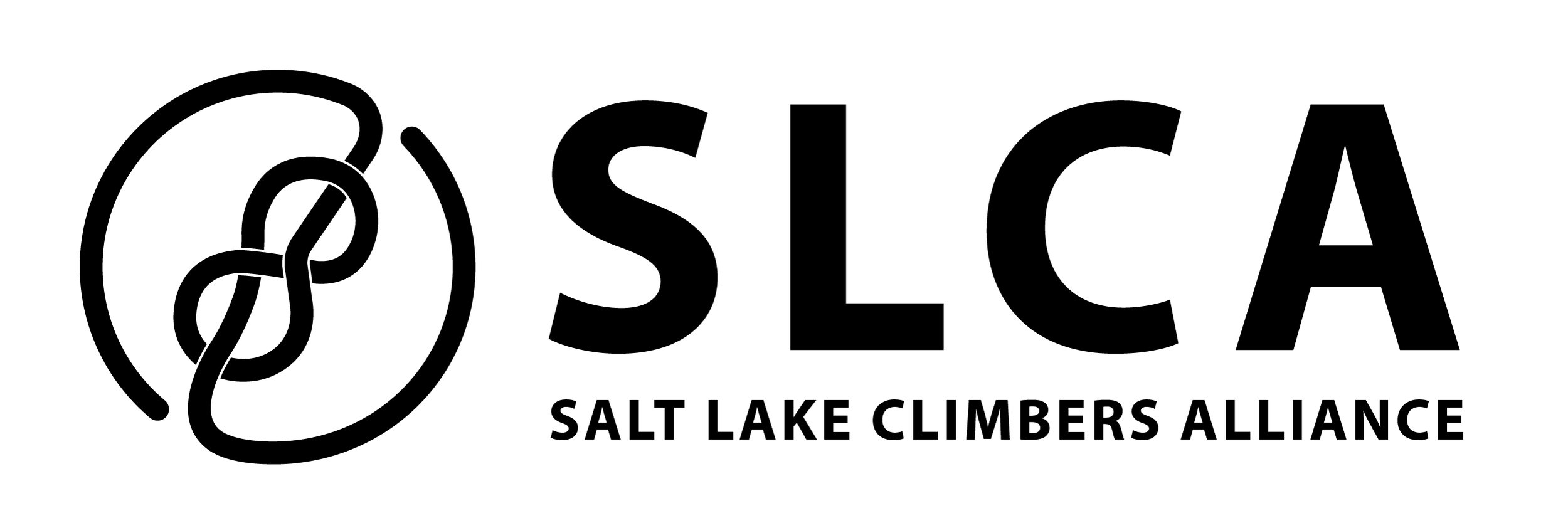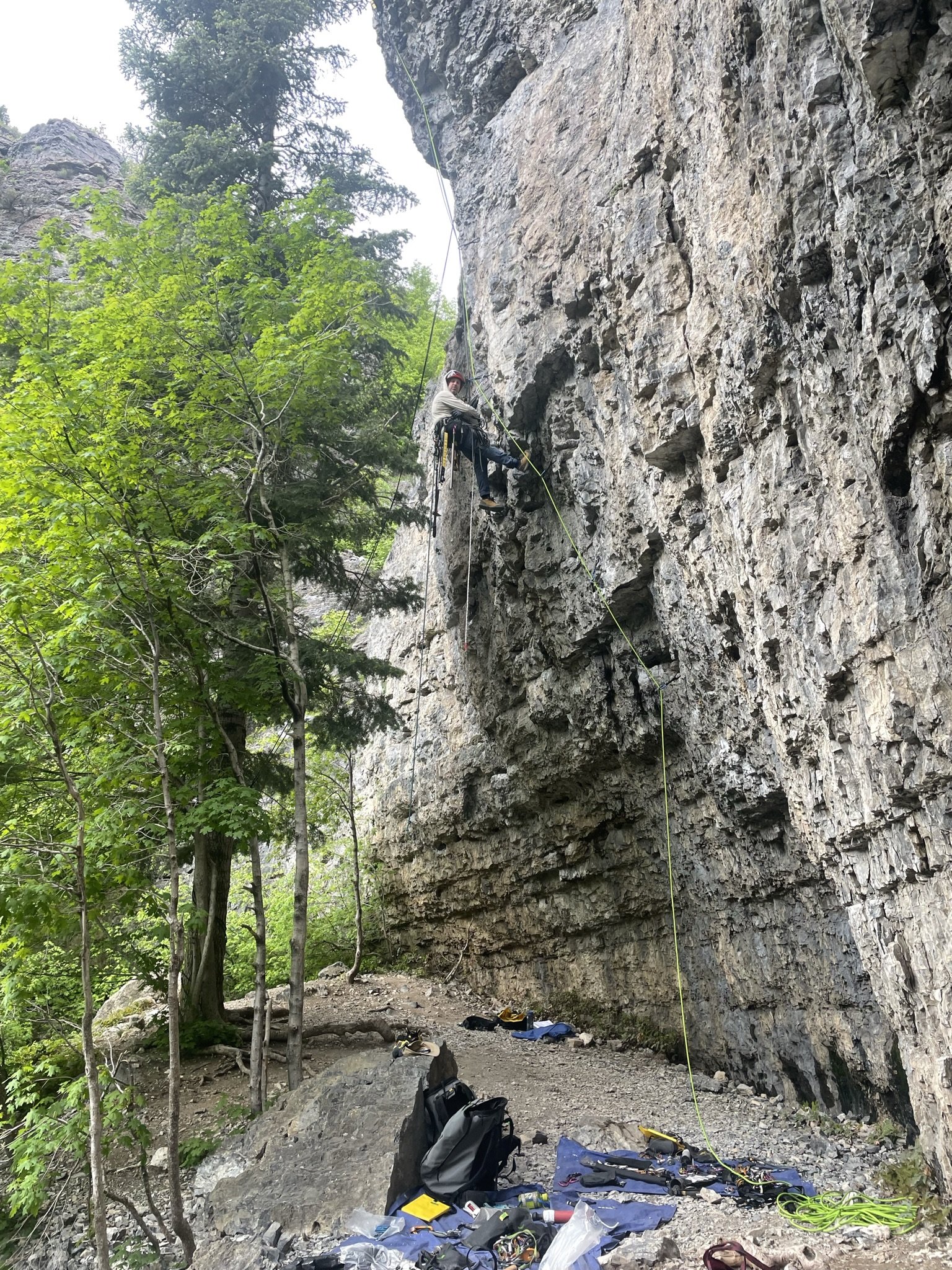American Fork Anchor Maintenance Recap
May 15/23 - 19/23
Hard Rock
Recap by Anchor Maintenance Coordinator, Andrew Brodhead
Working within the Wilderness Boundary
Earlier this month, our Anchor Crew embarked on a new adventure: working within the Lone Peak Wilderness Boundary in American Fork Canyon. Working with the Uinta-Wasatch-Cache National Forest and the Pleasant Grove Ranger District, the SLCA was able to perform its first week of rebolting within the Wilderness Boundary. This is a monumental moment for the SLCA and the Wasatch climbing community. This signals that the Pleasant Grove Ranger district does not view these bolts as illegal and the openness to perform bolt maintenance sans powered equipment in wilderness here in the Wasatch. This also comes at a time where the Access Funds first bill Protecting America's Rock Climbing Act or H.R 1380, is making its way through subcommittees.
For most, it's complexing to hear that the steeper, west facing aspect of Hard Rock is within the wilderness boundary. This boundary cuts right through the cliff line, near the route Vaporous Apparition 5.9. This line has historically limited route maintenance since power tools are illegal to use, a tool that is a critical part of this type of work. Despite this uphill battle, the crew was able to overcome the difficulties.
Two zones were of focus for the four days of work: Hard Rock West Face and the South Faces. The routes within the wilderness boundary that were maintained included: Suicide Blond, Vaporous Apparition, Beehive, Teeanova, Juggernaut and the Juggernaute Roof. Most of these routes required hand drilling to accommodate a new stainless steel 3’’ x ⅜’’ FIXE glue-in in the routes original hole. Almost all bolts were hole for hole, inclining the anchors. One major downfall of not using powered tools in this type of work is removing and patching a seized bolt. Typically when we come across an extraction gone wrong, we need to “chop” the bolt using a small grinder. We then are able to remove the head and patch the original hole to disguise it. Unfortunately we were unable to do this for one of the original anchors on Beehive. This leaves behind an unsafe eyesore of an anchor next to the new anchor. This is the unfortunate dark side to working within wilderness boundaries and the legality surrounding the use of power tools.
Around the corner on the face of Hard Rock, routes like Platinum Blond, Six to Eleven and Stoic Calculus were updated. These routes are very popular and often see attention even in the winter months. These routes saw updates with FIXE stainless steel glue-ins and steel lower offs. If climbing eight to eleven any time soon, please take caution since a 60m rope MIGHT NOT make it down to the ground!
Thanks to the Anchor Crew: Alex L., Chris B., Eric S. and Matt C. for the hard work.
Rock climbing is an inherently dangerous activity and we encourage anyone who participates to obtain the appropriate education and training in order to minimize accidents. We also encourage participants to consult resources including but not limited to guiding outfitters, SAR, Utah Avalanche Center, ranger stations, and weather reports. Nevertheless and although tragic, accidents can happen even when the participants have the proper training and have consulted authorities on conditions. Participants in outdoor climbing are assuming a risk, just as they do in skiing, mountain biking, kayaking, or other outdoor activities. Anchors once maintained by the SLCA are not guaranteed to be in the same state or condition as when they were maintained.



